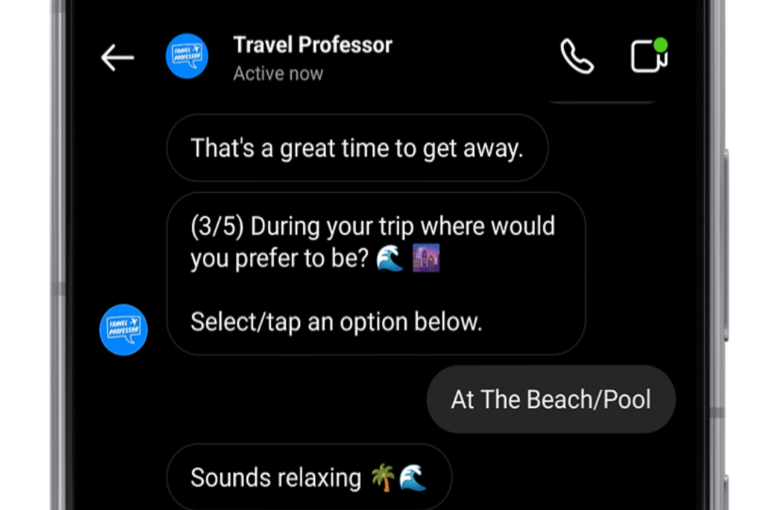The Pillars of a Successful AI-Powered Chatbot: Channel Choice, AI Models, and More
The Pillars of a Successful AI-Powered Chatbot: Channel Choice, AI Models, and More

In the ever-evolving landscape of technology and customer engagement, businesses are turning to AI-powered chatbots to provide efficient, personalised, and real-time support to their customers. While the concept of chatbots is easy to understand, their success hinges on various crucial factors. In this blog post, we’ll explore the key pillars of creating a successful AI-powered chatbot, including the choice of channel, the AI model, conversational design flow, audience relevance, user experience, and effective promotion.
1. Channel or Vessel
Selecting the right channel or vessel for your AI-powered chatbot is the first step on your journey to creating an effective customer engagement tool. The channel you choose will define where and how your chatbot interacts with users. Here are some considerations to guide your decision:
- Understand Your Audience: Start by understanding where your target audience spends their time. If your audience is predominantly on messaging apps like WhatsApp, Instagram DMs or Facebook Messenger, deploying your chatbot on these platforms can be highly effective.
- Business Goals: Consider your business goals. Are you looking to provide support, increase sales, or improve user onboarding? The channel you choose should align with your specific objectives.
- Channel Features: Evaluate the features and capabilities of the channels you are considering. Some channels offer more advanced options for chatbot integration, such as voice assistants or web chat widgets, which can be advantageous for specific use cases.
- Scalability: Think about scalability. Can the chosen channel accommodate your chatbot’s growth? Some channels may have limitations in terms of user base or functionality.
Ultimately, your choice of channel should be a strategic decision that aligns with your audience and business goals. For instance, if you’re a customer service-focused business, deploying a chatbot on a messaging app may be a sensible choice. However, e-commerce companies might benefit from chat widgets on their websites. You can even opt for for a multi-channel approach.
2. AI Model
The second crucial factor in developing a successful AI-powered chatbot is the underlying AI model. The AI model determines the chatbot’s ability to understand and respond to user queries effectively. Here are some aspects to consider:
- Accuracy and Training Data: The quality of your AI model depends on the accuracy of its responses. Ensure that your model is well-trained on a diverse dataset to handle a wide range of user queries.
- Customization: The ability to customize your AI model is essential. This allows you to tailor the chatbot’s responses to your specific industry and brand voice.
- Continuous Learning: Look for models that support continuous learning. AI models that can adapt and improve over time are more likely to provide valuable and up-to-date information to users.
- Language Support: Consider the languages your chatbot will operate in and choose a model that supports those languages effectively.
Selecting the right AI model is crucial, as it directly impacts the chatbot’s ability to provide a satisfying user experience. Choose an AI model that aligns with your business objectives and your users’ needs.
3. Conversational Design Flow
The design of your chatbot’s conversation flow plays a pivotal role in its success. A well-designed conversational flow can make interactions seamless and engaging. Here’s how to craft an effective conversational design:
- User-Centric Approach: Start with a user-centric approach. Understand the typical user journey and design the conversation flow to address their needs and pain points.
- Clear and Concise Messages: Keep your messages clear and concise. Users appreciate chatbots that provide information efficiently without unnecessary steps.
- Options and Navigation: Include options and navigation elements that guide users through the conversation. Make sure users can easily get to the information they’re seeking.
- Fallback and Error Handling: Implement a robust fallback system to handle user queries the chatbot doesn’t understand. This ensures users aren’t left frustrated when their questions go unanswered.
- Personalisation: Personalise interactions as much as possible. Use user data to provide tailored responses and recommendations.
An effective conversational design flow is like a well-orchestrated conversation, making the interaction smooth, informative, and enjoyable for users.
4. Audience Relevance
Relevance is key to creating a chatbot that resonates with your target audience. Understanding your audience’s needs, preferences, and pain points is paramount:
- Market Research: Conduct thorough market research to gain insights into your target audience. Understand their demographics, behavior, and preferences.
- User Feedback: Actively seek and listen to user feedback. It can be a goldmine of information to fine-tune your chatbot’s relevance.
- Segmentation: Consider segmenting your audience. Different user groups may have distinct needs, and tailoring your chatbot’s responses to each segment can greatly enhance its relevance.
- Content Strategy: Develop a content strategy that aligns with your audience’s interests and needs. This includes the information your chatbot provides and the tone it uses.
Creating a chatbot that’s relevant to your audience is a continuous process that involves staying attuned to changing trends and user expectations.
5. User Experience
A seamless and enjoyable user experience is essential for the success of your chatbot. Here’s how to ensure a positive user experience:
- Speed and Responsiveness: Ensure that your chatbot responds quickly to user queries. Slow response times can be frustrating for users.
- User-Friendly Interface: Design a user-friendly interface for your chatbot. The layout, buttons, and navigation should be intuitive and easy to use.
- Cross-Platform Consistency: Maintain consistency across different platforms and devices. Users should have a uniform experience, whether they’re interacting with your chatbot on a website or a messaging app.
- Accessibility: Make sure your chatbot is accessible to all users, including those with disabilities.
- User Data Privacy: Address user data privacy concerns. Be transparent about how user data is used and protected, which builds trust and ensures compliance with regulations.
The user experience should be a top priority, as it can significantly influence user satisfaction and engagement with your chatbot.
6. Promotion
Lastly, once you’ve developed your AI-powered chatbot, it’s crucial to promote it effectively to reach your target audience. Here are some promotion strategies to consider:
- Onsite Visibility: Ensure that your chat widget is prominently displayed on your website or within your app. Users should easily spot the chatbot and understand its purpose.
- Paid Channels: Consider using paid channels, such as click-to-message ads on social media to drive traffic to your chatbot. These ads can be an effective way to reach a broader audience.
- Email Marketing: Promote your chatbot through your email marketing campaigns. Inform your existing customers about the new support channel and its benefits.
- Social Media Integration: Promote your chatbot on your social media channels, where you can engage with your audience and direct them to your chatbot for inquiries.
- Content Marketing: Create informative and engaging content about your chatbot, its capabilities, and how it can benefit users. This can help generate interest and drive traffic.
Effective promotion is crucial to ensure that your chatbot is not only available but also known to your target audience, resulting in increased usage and engagement.










